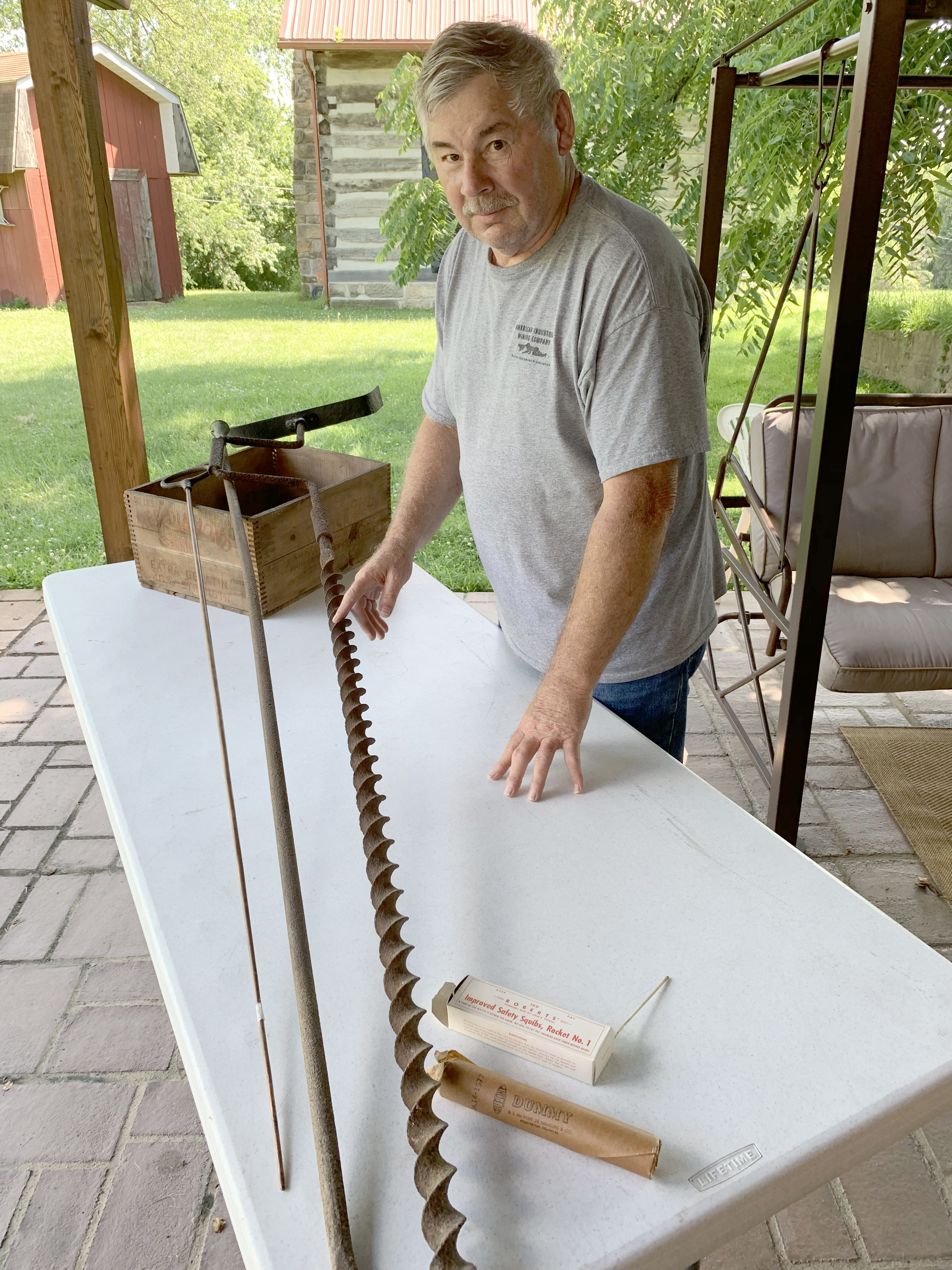Shooting the Coal
By Danielle Nyland
Before large-scale commercial mining came to Greene County, drift mines supplied coal to the community. These mines employed small numbers of men to mine the coal – by hand – and deliver it to homes and businesses. Most of these mines employed local men, like John Fox of Khedive, as miners.
The mine was owned by Bob Crayne and located in Homeville, a part of Jefferson Township. John began working at the Crayne mine in the 1950s after his brother, James, had opened the mine up about 50 feet.
When John started mining, he had no experience in shooting and mining coal and – being the only miner employed at Crayne mine – he had to learn the ins and outs by himself. He didn’t even have miner’s papers when he started – something that would soon change when an inspector would stop by the mine on a visit. “One day an inspector came in and he said ‘You got miner’s papers?’ and I said no,” John shares. “So I went to his home, paid $10, answered three or four questions – he almost told me the answers – and got my papers,” he adds with a laugh.
The Crayne mine entrance was less than four feet wide and five feet high. It had no ventilation system and no electric, but it did have a pump for water. Light was provided by the carbide lamp on John’s hardhat; coal was dug by hand and brought out in a wheelbarrow.
To get the coal from the coal seam, John would begin by shooting the coal. Coal from Crayne mine was drilled by hand, with a hand auger. John would drill into the coal seam, usually about three feet deep, with the hand auger. He would then insert a long copper needle with black powder at the end into where he drilled. . Dummy sticks with clay were placed in the hole and tamped down with a rod. The needle was removed and a squib was placed in the hole and lit. After lighting the squib, John had to take cover quickly, because once the squib burned down it would ignite the powder, shoot down the hole made by the copper tube and light the powder at the end. Once John had finished shooting the coal, he would gather up the loose coal, usually more lumps than powder if he did it just the right way and bring it out in a wheelbarrow.
For each ton of coal, John paid Crayne fifty cents in royalties – two cents for each bushel, with twenty-five bushels of coal in a ton. Crayne often was generous with the royalties John owed him. “A lot of the time he’d tell me to keep the money and that was it, cause I wasn’t making much,” John says.
John sold the coal for $5 a ton and delivered it in his truck. From the money he collected, John had to buy mining supplies, such as the black powder and blasting supplies he got when he rode the Crucible Ferry into Fayette County about once every month so that he could shoot the coal.
John worked in the coal industry for quite a few years after his time at Crayne mine. He worked in other drift mines around Greene County, such as the County Mine, before starting work at U.S. Steel’s Mount Braddock in 1969. After getting laid off from Mount Braddock in 1984, John drove truck for four years and eventually retired. John is celebrating his 90th birthday this year and has plenty of coal mining stories to share, so we just might revisit some of the other mines he worked at during his mining time.
